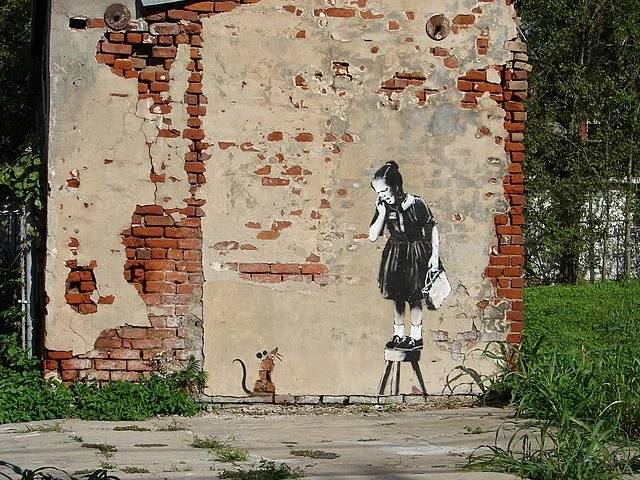Why Can't We Get A Grip On Graffiti?
Photo Courtesy: Mark Gstohl
Decorative, distasteful, and divisive. Graffiti has the capacity to be all those things and more. It occupies space in most metropolitan hubs like London and Berlin. Whether it’s strategically displayed on the side of a sweet-shop, or hastily plastered on the Portico, we’ve all encountered Graffiti in one form or another. So, its visibility is not to be the focus of this piece. Instead, I wish to question the ‘why’. Why is Graffiti so prominent? Why is it so problematic? Why is it so powerful? In the course of this article, I’ll attempt to address these questions with as much nuance as I can.
A form of visual communication which has existed since antiquity, Graffiti is a form of public expression which has always sparked discourse. The most notable source of contention is the question of its categorisation as either art or vandalism, due it often being done without permission. According to Britannica and Tate, modern Graffiti can trace its roots back to urban (and often underprivileged) areas in 1970s New York. Because of the tendency for Graffiti to feature profane language and ‘inappropriate’ depictions, it is frequently associated with gangs, violence, and delinquency.
But to treat Graffiti solely as a crass and illegal activity is to undermine its utility as a tool for socio-political change and resistance. Let us consider UCL’s most recent ‘run-in’ with Graffiti. This story having already been covered by Pi, I’ll simply mention the events of Wednesday 11th October in order to highlight how Graffiti can be used as part of political protest. The orange streaks of paint sprayed onto UCL’s beloved Portico were arguably the focal point of a climate change protest which took place earlier this month. Purposefully jarring, and unashamedly political - there’s no denying the power in such a statement, regardless of whether it’s read as art or vandalism.
In trying to place Graffiti in either of those categories, the innate agism of this binary needs to be explored. Typically, the bold colours and lettering we often see scrawled across shop shutters are viewed as defilement of property and the doing of anti-social, specifically young, miscreants. This is highlighted by a YouGov survey from May 2023 which explored instances of ASB (anti-social behaviour). Interestingly, Graffiti is included in this discussion alongside vandalism and criminal damage, all of which are overwhelmingly associated with young people. By contrast, the more ‘curated’ and ‘palatable’ works of older, more established creators like Banksy have become coveted by the masses - with his pieces selling for upwards of £20,000 in some instances. Despite the fact that much of Banksy’s work has also been done without permission and is therefore as illegal as the shopfront scrawl, one is considered art, and the other appalling.
This prompts the question: why is Banksy considered to be ‘one of the good ones’? Is this just another example of urban culture being selectively appropriated by the upper and middle classes and brought into the mainstream?
Either way, it’s vital we recognise the ageist and potentially classist undertones of the ‘Art vs Vandalism’ binary. Without doing so, we risk over-simplifying the more profound question about the extent to which we as a society have the right to moralise artistic expression. Defining Graffiti as either art or vandalism, is to reduce it to a question of right or wrong; good or bad, when in fact all things exist as both.

